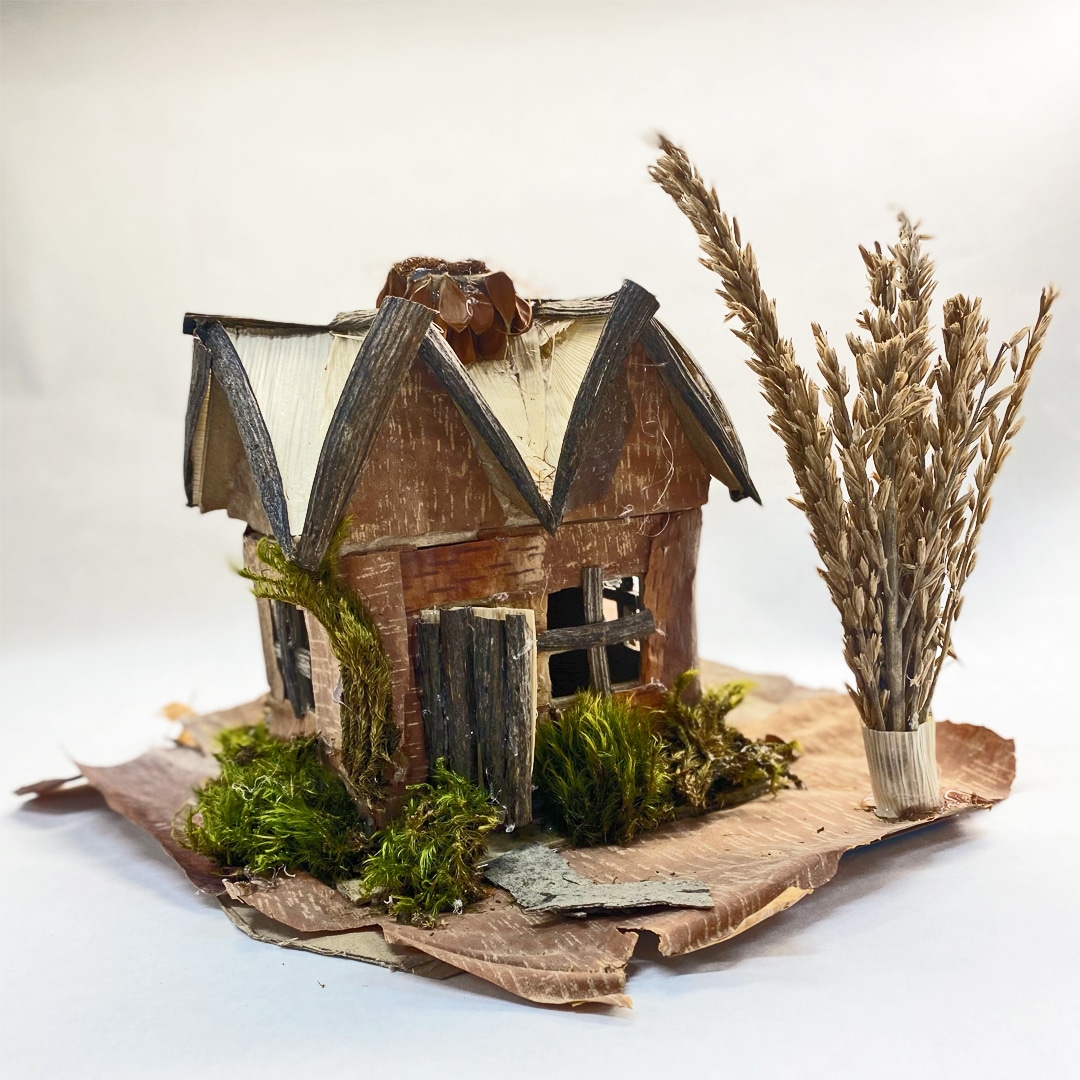
Paints from Natural Materials
Projects & Activities
Artists were creating work long before art supply stores were around, so where did they get their paints, brushes and canvases? They got creative and used materials that were accessible through their local environment. A stick blackened in the fire can become a charcoal pencil, a tanned buffalo hide or a cave wall can serve as a blank canvas, dried and crushed cochineal insects can create a vivid red dye for woven rugs.
While unjustly imprisoned at Heart Mountain along with thousands of other Japanese Americans who were forcibly relocated there during WWII purely because of their ancestry, artist Jishiro Miyauchi mixed his own paint colors using coal dust, rice paste and other natural pigments that he found around the camp. Miyauchi made many paintings during this time, which he would often give to friends and family. In Heart Mountain, Wyoming Miyauchi captures the bone-chilling cold of a Wyoming winter in this nightscape. Although the camp had a thriving arts community and some ready-made art supplies available, Miyauchi chose to make his own paints. Why do you think he made that decision?
For this activity, place is central. Gather materials you may find in and around your home to create your own natural paints.
See examples of works created with natural materials with this Nampeyo Bowl and this Flat-twined bag.
Materials Needed:
Kaolin Clay: This will give your paint a smoother consistency and will keep you from using up all of your pigments! (OPTIONAL)
Mask (Important to use when mixing with powders so you don’t breathe them in)
Mortar and pestle to finely grind your natural pigments; you can also use a food processor.
Finely ground pigment – see the suggestion list below.
Water
Paintbrush
Directions:
Step 1:
Finely grind your pigment of choice.
Step 2:
Mix together equal parts of pigment and white kaolin clay until completely blended together. You can also store this dry mix to use for the future!
Step 3:
To make the paint, add water into your dry mix. The amount of water you add into your dry mix depends on your preference of thin or thick paint.
Step 4:
You can refrigerate leftover paints for up to a week.
Tips
Below is a list of of suggestions to achieve different paint colors. Be sure that the materials you use are completely dry in order to grind into a fine powder. Experiment with dehydrated and freeze-dried fruits and veggies.
- Red: beetroot powder, rose petals, rosehips, strawberries
- Orange: paprika, cayenne, chili powder
- Yellow: turmeric powder, mustard seed, dandelion
- Green: matcha powder, spirulina powder
- Blue/purple: blueberries, acai berry powder, cornflower
- White: Chalk
- Black: activated charcoal powder
- Brown: natural soil, cocoa powder, coffee, cinnamon powder




